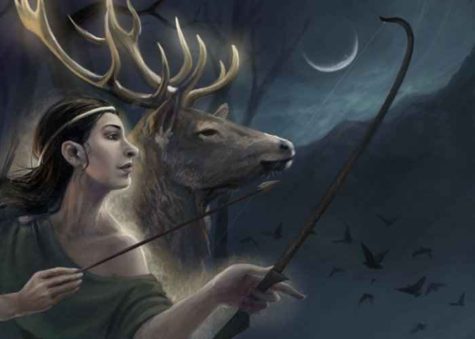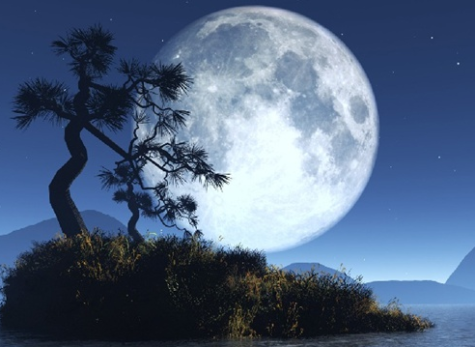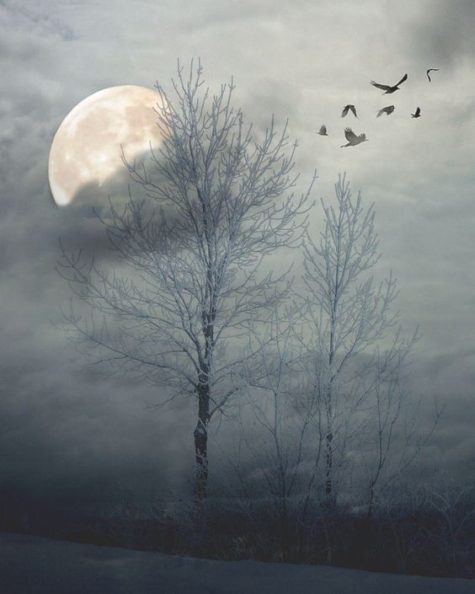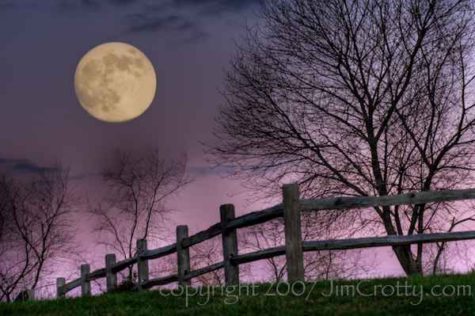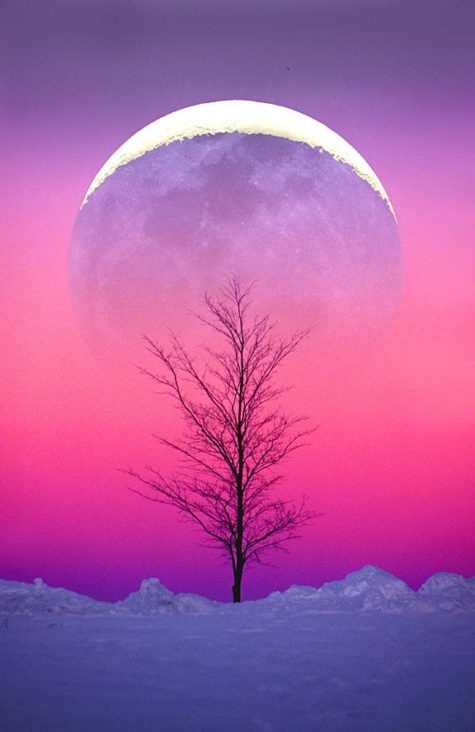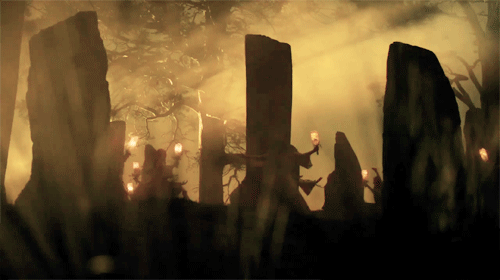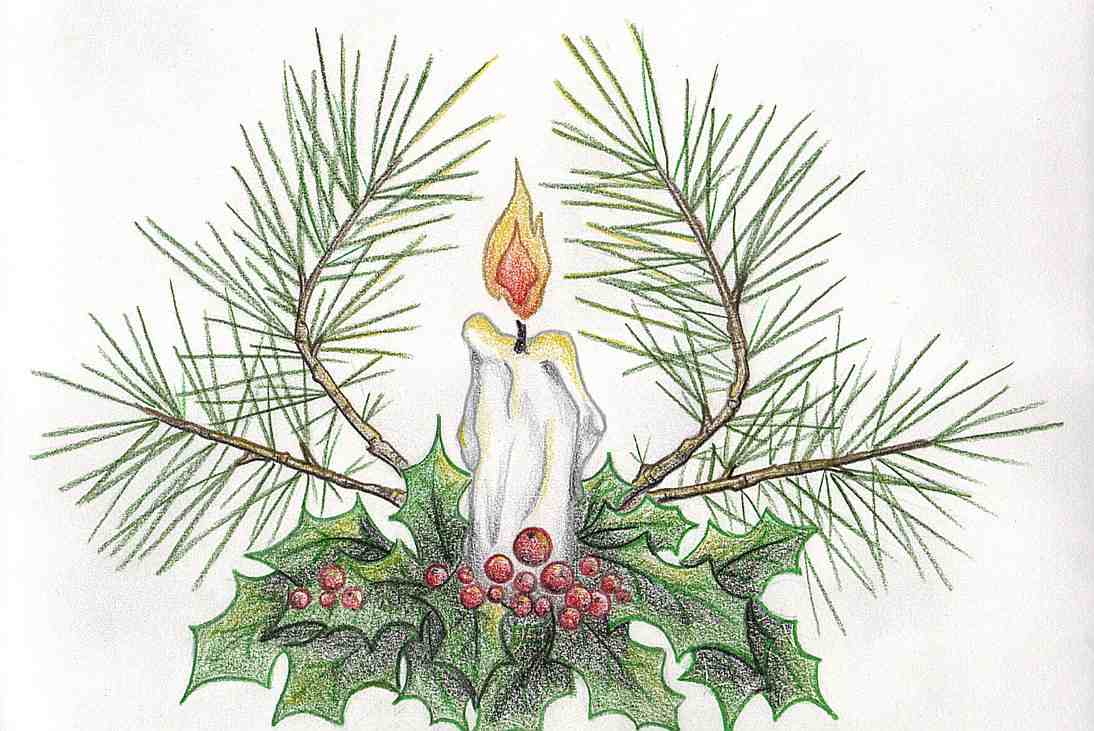Moon
People have been planting by the moon’s phases for centuries, in the belief that something in the lunar light or gravity affects the way plants grow.
The Simplest Rule For Moon Planting is as follows:
The moon planting rule says to plant crops that produce above the ground during the increasing light of the moon (from new moon to full moon) and to plant crops that produce below the ground during the decreasing light of the moon (from full moon to new moon).
A More Detailed Set of Moon Planting Rules:
- New Moon To Full Moon: Sow, Transplant, bud and graft.
- Full Moon To New Moon: Plow, Cultivate, weed and reap.
- New Moon To First Quarter: Good for Planting above-ground crops with outside seeds,
- flowering annuals.
- First Quarter To Full Moon: Good for planting above ground crops with inside seeds.
- Full Moon To Last Quarter: Good for planting root crops, bulbs, biennials, and perennials.
- Last Quarter To New Moon: Do Not Plant
What follows is a list (in alphabetical order) of the names given to the April moon. Also listed is the tradition and/or origin of that moon name:
Ashes Moon ~Taos
Awakening Moon ~Neo Pagan
Big Leaves Moon ~Apache
Big Spring Moon ~Creek, Cree
Broken Snow Shoe Moon ~Anishnaabe
Budding Moon ~Mohawk
Corn Planting Moon ~Winnebago
Egg Moon ~Cherokee, Algonquin
Eostre Moon ~other
Fish Moon ~Algonquin
Flowers Moon ~Pomo, Cherokee
Frog Moon ~Assiniboine, Janic
Geese Egg Moon ~Cheyenne
Geese Return Moon ~Dakota
Grass Moon ~other
Gray Goose Moon ~Cree
Green Grass Moon ~Sioux
Growing Moon ~Celtic
Hare Moon ~other
Ice Breaking Moon ~Arapaho
Indian Corn Moon ~Algonquin
Leaf Moon ~Kiowa
Leaf Split Moon ~San Juan
Ostarmanoth Moon ~Old English
Pink Moon ~Algonquin
Planter’s Moon ~Colonial American, Algonquin
Red Grass Moon ~other
Seed Moon ~Medieval English
Sprouting Grass Moon ~Algonquin
Spring Moon ~Passamaquoddy
Strawberry Moon ~Natchez
Sugar Maker Moon ~Abernaki
Wildcat Moon ~Choctaw
Wind Breaks Moon ~Hopi
Yellow Moon ~Pima
An ancient Greek custom of honoring Artemis’s birthday with a Full Moon cake is still seen today in our birthday cakes. The Greeks even put lighted candles on the Moon cake.
To honor the birthday of the goddess Artemis, bake or buy a small cake or cupcake. In Moon Magick, D J Conway recommends this ritual be performed on the night of the March crescent – it feels more appropriate to me to do the ritual on the night before or the night of her actual day.
Dress in nice clothes as if you were entertaining a friend. Cover your altar or spiritual place with a nice cloth. Put the cake with a small candle on it in the middle of the altar. Set pictures or statues of animals around it for decoration. Artemis loves cats of all kinds, deer, and all wild animals. Set a glass of juice or wine next to the cake.
Take a sip of juice and light the candle. Sing “Happy Birthday” to the goddess if you wish – or simply and sincerely wish her a happy birthday. Then say:
Lady of Wild Things, Moon Huntress,
Mistress of magick and enchantment,
I chant your lovely name for protection.
Artemis! Artemis! Artemis!
I whisper your praises to the Full Moon.
Cradle my restless, worn spirit
In the secret places of your deep woodlands.
Renew my life, swift Artemis.
Cut yourself a piece of the cake and eat it. Drink the juice. Tell the goddess why you need protection. When you are finished, thank her for the help that will come. Put the remainder of the cake outside as a feast for the birds and animals.
Note: I think it’s nice to simply honor the gods without necessarily asking for anything in return. A powerful blessing could be as simple as a recitation of her names and titles. For example:
Hail Mistress of the Animals
My heart opens to the Moon Huntress
Blessings to She of the Wild
Love to the Most Beautiful
Praise to the Lady of Many Shrines and Many Cities
I Worship the Lady of the Wild Mountains
Adoration to the Opener of the Womb
Gratitude to the Mistress of Magic and Enchantment
Artemis! Artemis! Artemis!
For maximum effect – repeat each line three times.
Another note: This ritual can be tweaked for use for any god or goddess on his/her day. Simply find an appropriate invocation – or rewrite the one above to fit, and decorate the altar with whatever might please your chosen deity.
Sources: This post was put together by Shirley Twofeathers for Gypsy Magic, and was moved to its new home here at shirleytwofeathers.com you may repost and share without karmic repercussions only if you give me credit and a link back to this website. Blessed be.
Amaolikkervik Moon ~Inuit
Big Famine Moon ~Choctaw
Bud Moon ~Kiowa
Budding Trees Moon ~Medicine Wheel
Buffalo Calf Moon ~Arapaho, Sioux
Catching Fish Moon ~Agonquin
Chaste Moon ~Medieval English
Crow Moon ~Algonquin
Crane Moon ~Potawatomi
Crust Moon ~Algonquin
Deer Moon ~Natchez
Death Moon ~Neo-Pagan
Eagle Moon ~Cree
Fish Moon ~Colonial American
Green Moon ~Pima
Lenten Moon ~Cherokee
Little Frog Moon ~Omaha
Little Spring Moon ~Creek, Muscokee
Lizard Moon ~San Juan
Long Days Moon ~Wishram
Moon of Winds ~Celtic
Moose Hunter Moon ~Abenali
Much Lateness Moon ~Mohawk
Rain Moon ~Diegueno
Plow Moon ~Janic (full)
Sap Moon ~Algonquin
Seed Moon ~Janic (dark)
Snow Crust Moon ~Anishnaabe
Snow Sore Eyes Moon ~Dakota
Spring Moon ~Passamaquoddy
Strawberry ~Cherokee
Sugar Moon ~Algonquin
Whispering Wind Moon ~Hopi
Wind Strong Moon ~Taos
Windy Moon ~Cherokee
Worm Moon ~Algonquin
Daeboreum (literally “Great Full Moon”) is a Korean holiday that celebrates the first full moon of the new year of the lunar Korean calendar which is the Korean version of the First Full Moon Festival. This holiday is accompanied by many traditions. The 2017 date is February 11, in 2018 the date is March 2.
Many customs and games are traditional on this day, which is also sometimes called the Great Fifteenth. The Fifteenth, or Full Moon Day, marks the end of the New Year season in Korea and is regarded as the final opportunity to ensure good luck for the coming year.
It is considered lucky on this day for people to routinely repeat their actions nine times—particularly children, who compete with each other to see how many “lucky nines” they can achieve before the day is over.
It is common to celebrate the Great Fifteenth with kite flying and kite fighting, which is done by covering the strings with glass dust and then crossing them so that they rub together as they fly. The string held by the more skillfully manipulated kite eventually cuts through the string of the less successful kite, sending it crashing to the ground.
Another popular sport on this day is the tug-of-war. In some areas, an entire town or county is divided into two opposing teams. It is widely believed that the winners will bring in a plentiful crop and will be protected from disease in the coming year.
One familiar custom is to crack nuts with one’s teeth. It is believed that this practice will help keep one’s teeth healthy for the year.
In the countryside, people climb mountains, braving cold weather, trying to catch the first rise of the moon. It is said that the first person to see the moon rise will have good luck all year or a wish will be granted.
People play the traditional game named Jwibulnori (쥐불놀이) the night before Daeboreum. They burn the dry grass on ridges between rice fields while children whirl around cans full of holes, through which charcoal fire blaze. These cans fertilize the fields and get rid of harmful worms that destroy the new crops.
For breakfast, a five-“grain” rice consisting of rice, millet, Indian millet, beans, and red beans is served (gok includes grains and beans). This is eaten with various dried herbs. One of the special foods of Daeboreum is Yaksik (약식 / 藥食). This treat is made of glutinous rice, chestnuts, pinenuts, honey, sauce, and sesame oil.
Also there is wine drinking for Daeboreum. It called ‘Ear-quickening wine (귀밝이술)’. This alcohol means that if someone drank this alcohol, he or she would be quick to hear and hear good news for one year.
On this day, Koreans traditionally do not give any food to dogs since it is believed that dogs that eat on this day will contract gad flies and become ill during the coming summer.
Sources: Wikipedia and Answers.com
What follows is a list (in alphabetical order) of the names given to the February moon. Also listed is the tradition and/or origin of that moon name:
- Avunnivik Moon ~Inuit
- Big Winter Moon ~other
- Bony Moon ~Cherokee
- Chaste Moon ~other
- Cleansing Moon ~other
- Coyote Frighten Moon ~San Juan
- Dark Storm Moon ~Janic
- Geese Moon ~Omaha
- Gray Moon ~Pima
- Horning Moon ~other
- Hunger Moon ~Janic, Algonquin
- Ice Moon ~Celtic
- Lateness Moon ~Mohawk
- Little Bud Moon ~Kiowa
- Little Famine Moon ~Choctaw
- Long Dry Moon ~Assiniboine
- Nuts Moon ~Natchez
- Old Moon ~Cree
- Purification Moon ~Hopi
- Running Fish Moon ~Winnebago
- Quickening Moon ~other
- Rabbit Moon ~Potawatomi
- Raccoon Moon ~Sioux
- Red Moon, ~other
- Shoulder Moon ~Wishram
- Snow Moon ~Neo-Pagan, Algonquin
- Solmonath Moon ~other
- Sparkling Frost Moon ~Arapaho
- Spruce Tips Moon ~Passamaquoddy
- Storm Moon ~Medieval English
- Sucker Moon ~Anishnaabe
- Trapper’s Moon ~Algonquin
- Trees Pop Moon ~Sioux
- Wild Moon ~other
- Wind Moon ~Creek
- Winter Moon ~Taos
- Wolf Moon ~other
The last moon phase of the year is the Big Winter Moon in December, also called Long Nights Moon, or the Cold Moon.
Correspondences:
- Colors: White, red, and black
- Gemstones: Obsidian, ruby, serpentine
- Trees: Pine, holly
- Gods: Minerva, Osiris, Athena, Persephone and Hades
- Herbs: Ivy, mistletoe, holly and berries, cinnamon
- Element: Fire
As the days get shorter and Yule approaches with the longest night of the year, we force ourselves to get through the darkness because eventually we will see the sunlight and warmth again. Think about the things in your life that you’ve had to endure. Sometimes, a part of us must die in order to be reborn. Now is the perfect time for spiritual alchemy — time to evaluate your life, and know that you’ll survive the dark times.
If you’ve already put the darkness behind you, take your good fortune and share it with others. When it’s cold outside, open your heart and home to friends and family. Reach out to people who might be suffering from the chill of winter, either spiritually or physically.
source: about.com
What follows is a list (in alphabetical order) of the names given to the December moon. Also listed is the tradition and/or origin of that moon name:
- Aerra Geola ~other
- Ashes Fire Moon ~San Juan
- Before Yule Moon ~Cherokee
- Big Bear’s Moon ~Winnebago
- Big Winter Moon ~Creek
- Bitter Moon ~Chinese
- Cold Moon ~Algonquin, Celtic
- Cold Time Moon ~Mohawk
- Deer Horn Shedding Moon ~Sioux
- Frost Fish Moon ~Passamaquoddy
- Heavy Snow Moon ~other
- Kaitvitjuitk ~Inuit
- Little Finger Moon ~other
- Long Nights Moon ~Algonquin
- Mid-Winter Moon ~other
- Night Moon ~Taos
- Oak Moon ~Janic (full), Medieval English
- Peach Moon ~Choctaw
- Popping Trees Moon ~Sioux, Arapaho
- Real Goose Moon ~Kiowa
- Respect Moon ~Hopi
- Running Wolves Moon ~Cheyenne
- Small Spirits Moon ~other
- Snow Moon ~Cherokee, Janic (dark)
- Turning Moon ~other
- Twelfth Moon ~Dakotah
- Under Burn Moon ~other
- Winter Maker Moon ~other
- Wintermonat Moon ~other
- Wolf Moon ~other
- Yellow Leaves Moon ~other
What follows is a list (in alphabetical order) of the names given to the November moon. Also listed is the tradition and/or origin of that moon name:
- All Gathered Moon ~San Juan, Native American
- Beaver Moon, ~Algonquin, Native American, Colonial
- Corn Harvest Moon ~Taos
- Dark Moon ~other
- Dead Moon ~Janic (dark)
- Deer Antler Shedding Moon ~other
- Deer Rutting Moon ~Cheyenne
- Falling Leaves Moon ~Sioux
- Fog Moon ~other
- Fledgling Raptor Moon ~Hopi
- Freezing River Moon ~Arapaho
- Frosty Moon ~Algonquin, Native American, Colonial
- Geese Going Moon ~Kiowa
- Itartoryuk Moon ~Inuit
- Mad Moon ~other
- Mourning Moon ~Janic (full)
- Oak Moon ~other
- Poverty Moon ~Mohawk
- Snow Moon ~Mediaeval English
- Snowy Morning Mountains Moon ~Wishram
- Storm Moon ~other
- Trading Moon ~Cherokee
- Tree Moon ~Neo Pagan
Source: Everything Under The Moon
November’s Full Moon beckons us to look deep within. With the Sun in Scorpio, the Snow Moon is a potent time to look beyond the obvious. This is an excellent time for dreamwork and lends its energies easily to meditation and divinatory efforts as well as projects that require endings. Use the Snow Moon’s energy for setting magickal goals into motion, as well as planning for the reinvention of your life.Take advantage of this transitional period to set your goals for the future in motion.
~From: 2008 Witches’ Spell-A-Day Almanac


